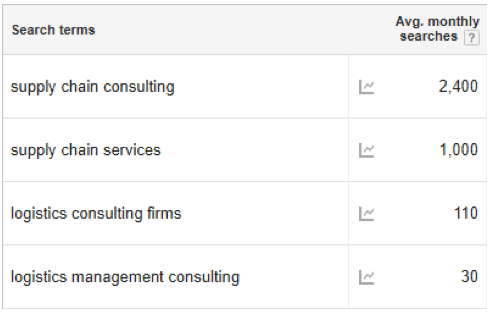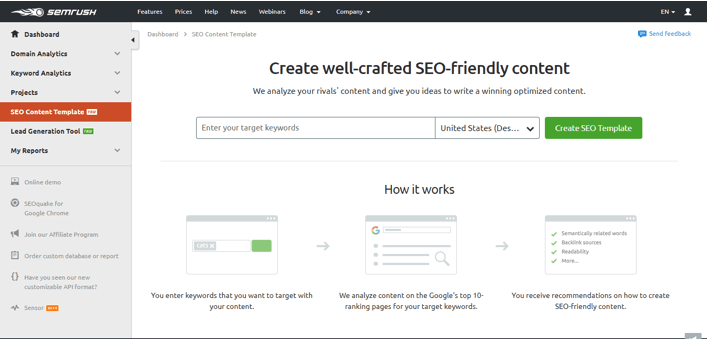Learning How to Construct a Keyword-Savvy SEO Strategy
For SEO professionals, keywords are the foundation of every tactic and digital marketing initiative we perform. If you’re looking for a stronger understanding of how SEO strategy works – you’ve come to the right place.
In the blog, we’re going to break down the elements of a digital marketing strategy and emphasize how to optimize your website’s “on-site” copy for search engines.
At this halfway point in the year, it’s time to assess how well your keyword strategy is contributing to your organic search rankings and site traffic performance – and most importantly, how you can improve it for the remainder of the year.
Download our recently updated Premium Member Resource – Successful SEO Guide
This guide is one of our most popular and rightly so. If you get it right, SEO can be a fantastic, relatively low-cost way to drive quality visitors who want to do business with you to your site.
Access the
Step 1: Determine Your Market-Defining Keyword
The first step to any successful keyword strategy is designating a market-defining keyword. This is especially important for B2B companies where the search volume is generally lower than it is for B2C businesses. As a result, it’s important to choose a keyword identifier that’s both the object of most search queries and relevant to your core services or products.
To illustrate this point, consider this sampling of “exact match” keyword data from Google AdWords, as it relates to the supply chain and logistics industry:

You’ll notice that the replacement of just one or two words in your market-defining keyword can mean the difference between a few dozen organic searches and several thousand. This should give you a better idea of how paramount keywords can be to your online success.
From an SEO standpoint, every detail matters when it comes to keywords. To continue with the supply chain industry example, it’s also important to include potential abbreviations of your target keyword, such as “SCM” for the term supply chain management.
If there are too many well-established companies competing for your targeted keyword, it’s time to investigate “long-tail” keyword options. Long-tail keywords are generally lengthier, more specific versions of a highly competitive keyword. For example, use “supply chain consulting for small businesses” as opposed to “supply chain consulting.”
Step 2: Perform a Content Audit
With your market-defining keyword in hand, you can now develop a list of other keywords related to your business that you’re interested in ranking for. This list should be exhaustive and specific to each of your B2B service lines. Without this comprehensive list of keywords, your webpages will lack direction from an SEO standpoint and won’t contribute much to your digital marketing strategy. A good rule of thumb is that each page of your website relating to your services should have a predetermined keyword in the title tag and meta data with variations of that keyword in the copy.
To get a better idea of the state of your website’s current copy from an SEO perspective, consider performing a content audit.
Existing Websites
Content audits can be as in-depth as you want for existing websites. For a deep dive, comb through each page to identify ways you can expand upon current copy; jot down subheadings you can add or optimize; view competitors’ equivalent pages for best practices; and identify opportunities to create new pages.
If you’re looking to start out with a more cosmetic audit, simply find more ways to add your service-related keywords and target locations, if applicable, into your webpage copy.
Keep in mind that while it may be tempting to add your target keywords to every sentence, you don’t want to sacrifice the quality of your content. “Keyword stuffing” is an old technique that no longer applies in the world of modern SEO.
If your current copy is already optimized, it may be time to create new material in the form of content marketing to create new ranking opportunities. If you’re not sure if this tactic would be a good fit for your B2B company, see our post detailing the 5 signs you should invest in content marketing.
New Websites
For businesses or companies that are investing in a new website, this is the perfect blank slate for strong SEO. Establish a process for content creation, either with your marketing agency or in-house teams that facilitate collaboration between the digital marketing and copywriting departments.
When beginning to create page outlines, first determine what the page title and subheading (or H1 tag) will be. Determine the two keywords you most want to rank for and plug them into those spots. This example demonstrates how you can start to thoughtfully incorporate valuable keywords into a page outline:
- Page Title: Global [Supply Chain Consulting]
- Subtitle: Providing Expert [Supply Chain Services] from Continent to Continent
Continue on with this skeleton format, designating keywords that should be included in each section.
Step 3: Solidify Your Performance
Beyond performing a content audit, there are several tools that can help you understand your current rankings and determine strategies to improve keyword rankings.
- Google Search Console: This is a great and free tool for understanding your current keyword rankings.
- Google AdWords Keyword Planner: This keyword tool on the Google Adwords platform is generally regarded as the most accurate source of keyword data. Although, you have to pay to play to get the goods.
- Moz: The Keyword Explorer tool via the Moz dashboard is great for sparking ideas about potential content. Our favorite feature is the ability to see what questions people are searching for with your specified keyword.
- SEMRush: Similar to Moz, SEMRush is another source of organic search data. It features an SEO Content Template, that’s perfect for those who are new to the content optimization game.

This is just a brief sampling of the tools available for keyword research. Oftentimes, free trials are available to help you make the right choice for your B2B company.
Of course, the utilization of keywords doesn’t stop with your website. Once you’re confident about your on-site performance, branch out to analyze keyword insights and targets through current search engine marketing tactics and paid social media advertising.
When it comes to optimizing your SEO strategy, the sky’s the limit. – There’s always potential to incorporate target keywords in new and more influential ways and the best spot to look may be right under your nose.
 Mark Schmukler, CEO and Co-Founder of Sagefrog Marketing Group, LLC, brings more than 30 years of global marketing and consulting experience his writings, leveraging his B2B background to lead brand strategy and business development.
Mark Schmukler, CEO and Co-Founder of Sagefrog Marketing Group, LLC, brings more than 30 years of global marketing and consulting experience his writings, leveraging his B2B background to lead brand strategy and business development.





 Mark Schmukler, CEO and Co-Founder of
Mark Schmukler, CEO and Co-Founder of 


